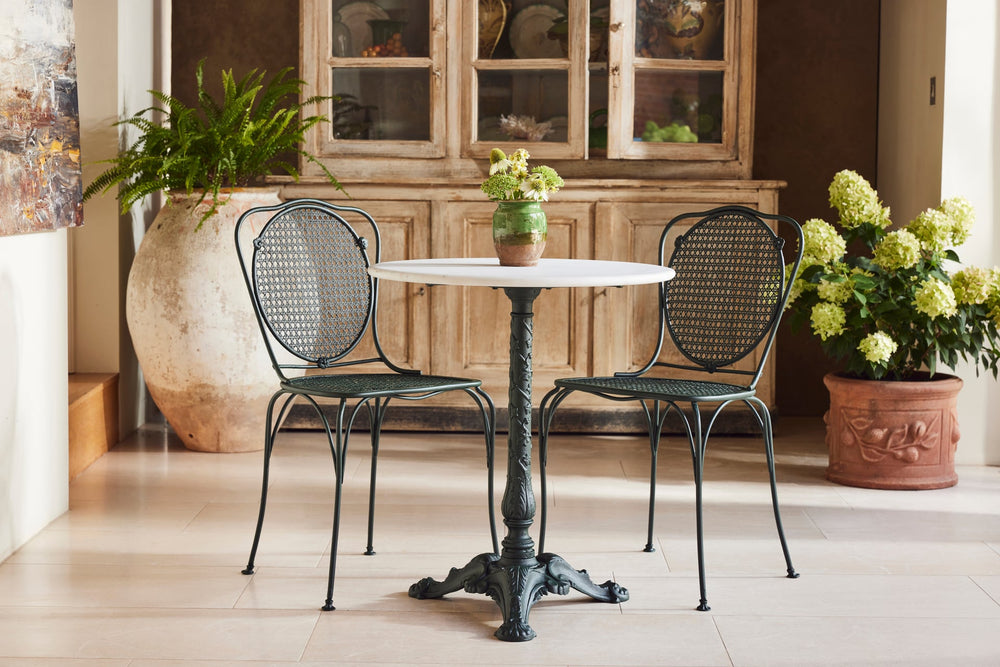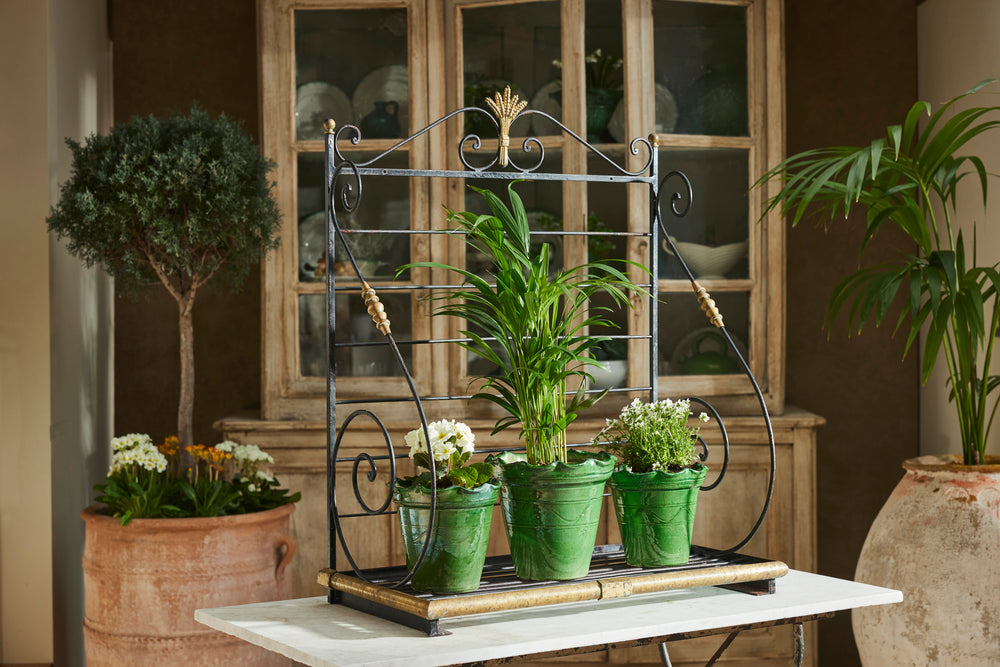There is nothing like the authenticity of original antiques. We often source antique pots and decorative items from the South of France which can be used as garden planters or for interior decor.
In this guide, we will share the unique provenance of these items, which often relates to food preparation throughout the 18th and 19th Centuries. Specifically, the mixing, storing and preserving of food from the land and dishes synonymous with the region.
Olive Oil Pots & Jars
WheMediterranean cuisine, you probably think of olives. Olive jars were used to transport and preserve this staple throughout Southern France. Biot Olive Pots are named after the village Biot, which is just down the coast from Nice, France. These iconic large jars were originally used to transport olives and olive on you think of the il.
Unlike the olive pots made in Anduze which were very tall and traditionally had a deep green glaze, Biot olive pots have their glaze on the inside and around the neck of the jar. This prevented the olives and oil from seeping into the terracotta.
They also have a distinctive beige hue to their terracotta rather than a more common, warmer red patina. 18th Century Biot olive posts can be identified by their large proportions and upright shape - inspired by the shape of an olive. As styles changed, they later became rounder and more bulbous throughout the 19th Century.

Antique Water & Oil Jars
Where there are olives, there is olive oil! As well as pots, these jars are also have a yellow and green glaze half way up the jar - the main difference is of course the size and spout detail.

For storage of other liquids such as water, semi-glazed terracotta jugs were created. The exquisite example below is of three antique water jugs from the Bordeaux region of France. After nearly 200 years, these primitive jugs still an excellent example of the a potters craft.

Confit Pots
Confit Pots were used to store Confit Du Canard throughout the 18th Century in France. The word "confit" stems from the French word "confire", meaning "to preserve".
These highly collectable jars are characterised by their traditional yellow or green coloured pottery and glaze. The glaze starts half way up the pot, with the bottom of the pots left unglazed because the preservation process of keeping the preserve cool, called for the pot to be covered in cloth and buried in the ground up to the glaze line.


Just like with the olive oil jars, while yellow or green glaze is more traditional, confit pots can also be found in other coloured glazes such as white. We enjoy the variety of sizes and patinas which look brilliant as a collection.
Mixing Bowls
The confit was used to make another well-known dish known as Cassoulet of Castelnaudary. Cassoulet was originally a food of peasants - a simple assemblage of what ingredients were available with white Haricot beans to create a humble stew. Large terracotta mixing bowls were used to prepare this stew, which would be cooked slowly for hours.

Salt Pots
Finally, all good food needs a dash of salt! Salt was stored in tilted terracotta pots in the 18th century. Unlike the confit pots, salt pots did not need glaze to seal liquid or a sealed lid. Instead, they used a muslin to cover the top and you can still see the smalls used to peg this material in place.
They were tilted for ease of use to access this essential seasoning and preserving ingredient.

There are so many different types of food preparation pots from Southern France during the 18th and 19th Centuries. We keep adding to our collection and if you want to be the first to know when we have more of these unique antiques, please sign up to our mailing list.










































